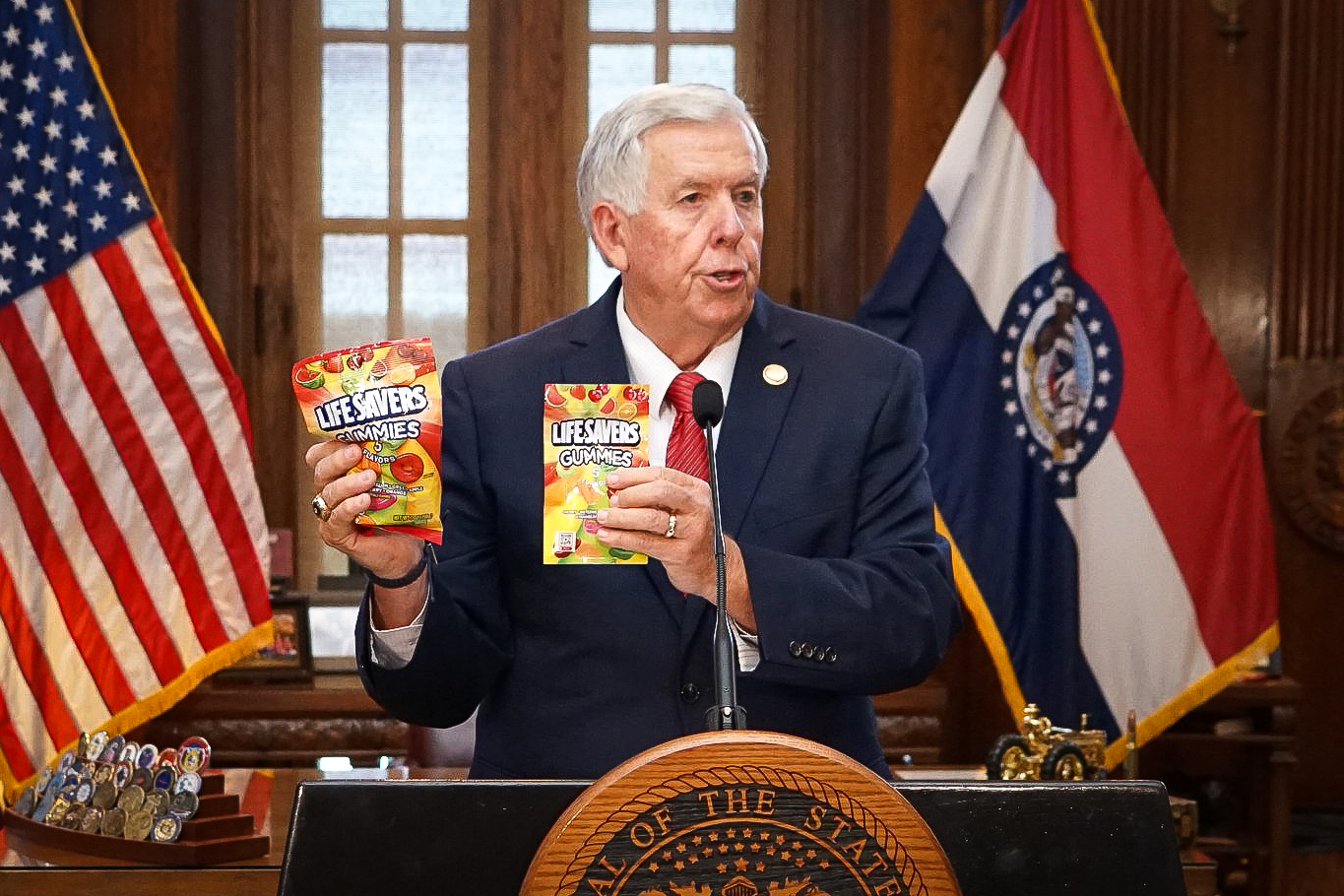5:55
Commentary
Commentary
Missouri regulators targeting mislabeled THC products is a good start, but it’s not enough

Gov. Mike Parson speaks at his Capitol press conference announcing Executive Order 24-10 that bans the sale of intoxicating hemp products in Missouri “until such time approved sources can be regulated by the FDA or State of Missouri through legislative action,” he said (photo courtesy of Missouri Governor’s Office).
Last month, the Missouri Department of Health and Senior Services announced that their enforcement of Gov. Mike Parson’s executive order on hemp products will focus on the misbranded THC products that pose a danger to children.
At St. Louis Children’s Hospital, we thank the governor for his executive order and this important step forward in better keeping our kids safe, and the department’s focus on protecting this vulnerable group. The action to ban misbranded THC products is an important first step, but the seriousness of this issue demands additional regulation and safety measures at home to protect children.
The ingestion of THC is life threatening for small children — especially those under the age of 12 — who are at higher risk of serious medical consequences due to their small size and weight. Intensive care unit admission, prolonged observation in the hospital, lumbar punctures, head CT scans and other potentially invasive medical tests are just some of the interventions small children may need after a THC exposure.
As THC products become more readily available in our communities, the need for regulation is vital. The products that specifically contain Delta-8, and therefore are affected by the governor’s ban, are an appropriate target for regulation. These products represented about 40% of the THC overdoses at St. Louis Children’s Hospital in 2023, our most recent data show.
As suggested by the governor, the most common overdose incidents seen in our emergency department occur when the drug has been marketed and packaged as a food in an “edible” form of THC. In these instances, kids reasonably mistake the lookalike “edible” drug as candy or other desserts and consume them in quantities as they would with real food.
Clear labels and testing information are important for adult consumers, but these are not realistic solutions to the problem of unintentional use by young children. Other regulatory protections could include the mandatory use of childproof packaging and clear restrictions on marketing practices that appeal to children.
While we await more complete regulatory solutions, there are steps that adults can take to protect children at home, where most poisonings occur. As injury prevention experts, along with the American Academy of Pediatrics, we advocate for recreational and medicinal THC to be stored like any drug or medicine to keep it out of the hands of curious children.
THC products in the home should be stored separately from other food or candy, out of children’s reach and line of sight. Lockboxes, such as the ones St. Louis Children’s Hospital offers in our emergency department, are another safeguard against unintentional or intentional use by children.
For one year, as part of a pilot program, 1,000 lockboxes will be offered free of charge, thanks to a grant provided by the Health Department, to families who arrive at the emergency department with a child who has accidentally, or intentionally, ingested medications not meant for them. These boxes will also be provided to families experiencing behavioral health crisis – like suicidal ideation — to prevent self-harm by accessing medications.
The hope is this pilot program, aimed at curbing child overdoses, will find similar success to the BJC HealthCare system wide effort of offering free, no questions asked gun locks at all its facilities.
To be sure, this is a complex issue with no one magic solution. Packaging and in-home safe storage measures have, to date, not kept up with the need. And while the executive order is not a cure-all for accidental child overdosing on THC, we are grateful for this step forward in protecting Missouri’s children.
Our stories may be republished online or in print under Creative Commons license CC BY-NC-ND 4.0. We ask that you edit only for style or to shorten, provide proper attribution and link to our website. AP and Getty images may not be republished. Please see our republishing guidelines for use of any other photos and graphics.





Trish Lollo